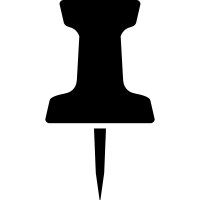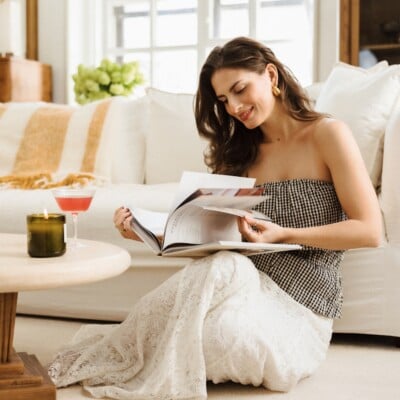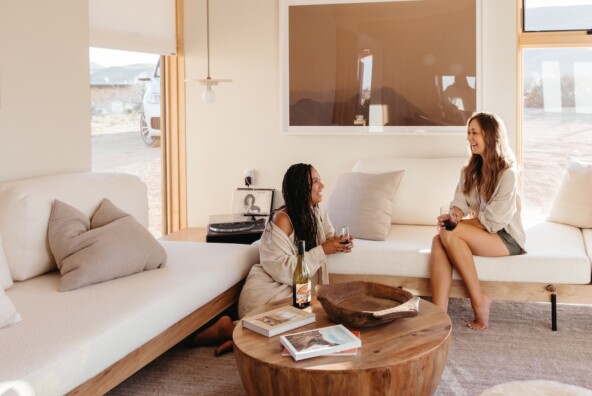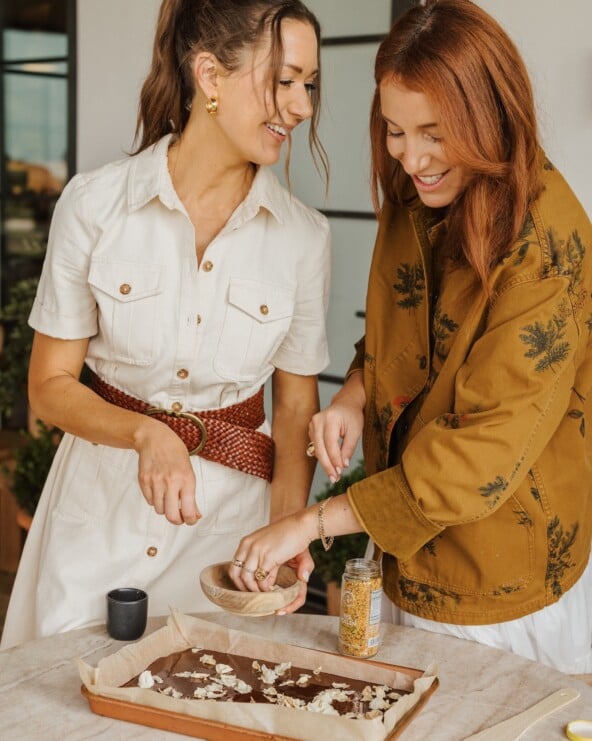There’s a truth I’ve been circling lately: I’m tired of trying to be my “best self.” Somewhere between the micro-habits, the stacks of self-help books, and the endless talk of optimization, wellness started to feel less like care and more like performance. I’ve caught myself wondering, almost sheepishly: Has wellness gone too far? And the uncomfortable answer I keep coming back to is yes.
I don’t want to optimize my life anymore—I want to live it. To feel curious, expanded, and inspired, not constantly polished. Instead of perfecting my routine or hacking my habits, what I crave is something truer: expansion, not efficiency. Depth over discipline. Learning not because I should, but because it makes me feel awake again.


A Personal Curriculum for Living Fully
That’s why, when I stumbled across the idea of a personal curriculum, it felt like an exhale. Not another system to conquer or practice to master, but a return to the simplest impulse: following what fascinates me. Exploring ideas, books, and skills because they spark something—not because they promise to make me better.
I’ve always believed curiosity is my greatest superpower. I don’t pretend to have everything figured out (far from it), but my instinct to follow what lights up my mind has never led me wrong. It’s kept me flexible, hopeful, and connected through every chapter of my life.
Learning for pleasure—not perfection—expands us in ways achievement never can.
A New Way to Grow This Season
This winter, instead of setting goals, I’m designing a syllabus—one built not around productivity, but around pleasure, curiosity, and aliveness. A personal curriculum isn’t about becoming someone new. It’s about returning to parts of yourself that felt pushed aside under the weight of self-optimization.
So if you’re feeling the same pull, here’s what a personal curriculum really is, and how to create one that feels like a deep breath instead of a checklist.
What Is a Personal Curriculum?
A personal curriculum is exactly what it sounds like: your own self-directed “course” in the subjects and ideas that spark something inside you. It’s a practice rooted in curiosity rather than achievement—a return to learning for the pure, unpolished joy of it.
Maybe this looks like a month immersed in poetry, a season spent learning to bake bread, or a quiet stretch studying philosophy or photography. No performance. No measuring. Just the slow, steady thrill of following what feels nourishing right now.
In a culture obsessed with progress, a personal curriculum lets us be students of life again—curious, playful, open. Not striving, but expanding. Not achieving, but awakening.
Why It’s the Antidote to Winter Burnout
Winter invites a different pace. The light softens, routines blur, and our bodies ask us to turn inward. But instead of honoring that, we often try to outrun it with plans, resolutions, and productivity binges.
A personal curriculum meets winter where it is. It gives us a way to stay engaged—not through urgency, but through inspiration. Burnout comes from output without replenishment. A personal curriculum is replenishment, reminding us that growth doesn’t have to look like striving. Sometimes it looks like paying attention.
How to Find What You’re Curious About
The first step isn’t planning—it’s noticing. Curiosity shows up as a tug: a book you keep picking up, a recipe you’ve saved three times, a topic you research late at night.
Ask yourself:
- What am I drawn to, without trying?
- What ideas or topics keep resurfacing?
- What feels like nourishment, not obligation?
- What would make me feel more alive to learn about?
Start there. Your curiosity is already pointing somewhere—your job is simply to follow it.
How to Create Your Own Personal Curriculum
Once you feel that spark, give it structure—enough to support it, but not so much that it feels rigid. Think clarity and rhythm, not rules.
1. Choose 1–2 themes
Depth, not breadth. Let this season be about one or two meaningful threads. Examples could be: poetry, seasonal cooking, philosophy, photography, art history, or nature study.
2. Pick your learning formats
Once you’ve chosen your themes, decide how you want to learn. A meaningful personal curriculum blends input and expression—absorbing ideas, then engaging with them. Think about choosing one format from each category:
Input
- Read (books, essays, Substacks)
- Watch/Listen (lectures, documentaries, podcasts, talks)
Action
- Practice (writing, cooking, photography, sketching, language)
- Experience (museum visits, nature walks, workshops, classes, conversations)
Reflection
- Journal or voice memo
- End-of-week notes on what moved you or sparked something
The magic is in the balance: learn ? do ? reflect. It keeps your curiosity alive and helps your learning actually stick. Let ideas come in, move through you, and transform you—that’s where growth really lives.
3. Set a gentle rhythm
A personal curriculum comes to life through rhythm. This looks like small, consistent touchpoints that help curiosity become part of daily life. Choose simple anchors you can look forward to, like:
- Sunday morning reading ritual
- One winter walk each week to notice light, stillness, and seasonal change
- One new recipe on the weekend
- A monthly creative or cultural outing (a museum visit, workshop, bookstore browse, film, author talk, etc.)
The goal isn’t to fill your calendar—it’s to create moments you return to.
4. Stay flexible
Your interests will shift as you explore. That’s not a failure, it’s part of the process. If a theme stops inspiring you, pivot. If a new curiosity starts tugging, follow it. A personal curriculum isn’t meant to lock you in; it’s meant to move with you.
5. Reflect weekly
Take some time at the end of each week to check in with yourself. You don’t need a spreadsheet or a journal routine — just a moment of honest noticing.
Ask yourself:
- What sparked something in me this week?
- What felt nourishing or meaningful?
- What do I want to explore more next week?
Ideas to Explore
Think of these not as tasks, but invitations—small ways to follow your curiosity in everyday life. Choose one or two that feel exciting or simply interesting. Let inspiration, not pressure, be the guide.
Creativity: Study a new poet each month, annotate one poetry collection, weekly free-writes or journaling
Food: Deep dive into one cuisine, learn foundational winter techniques (broth, braise, bread), host a cozy dinner to share your learning
Philosophy and self-inquiry: Choose one thinker or school of thought, read one text slowly—a chapter at a time, keep a notebook for questions + ideas
Art and visual study: Pick an artist or movement, visit a museum or gallery once a month, sketch or photograph what inspires you
Nature and seasonal attention: Learn winter plants or constellations, walk the same route weekly to notice changes, keep a simple nature notebook
Home: Study one design philosophy or era, create small seasonal vignettes, notice and elevate one everyday moment (a candle at dinner, a bedside vase of flowers, thoughtfully plated meals)
The Beauty of Learning for Learning’s Sake
Winter gives us the gift of slowness—a chance to ease off the accelerator and turn inward, not in retreat but in soft expansion. A personal curriculum honors that rhythm. It reminds us that growth doesn’t only happen through achievement. It blooms in curiosity, play, and the act of paying attention.
As you move through the season, let your interests guide you. Pick up the books that tug at you, follow a recipe that feels comforting, or walk just to notice winter light on the trees. Let your learning be personal and your pace be kind. There’s no finish line—just a path forward.
Here’s to a winter of rediscovering the joy of learning.






